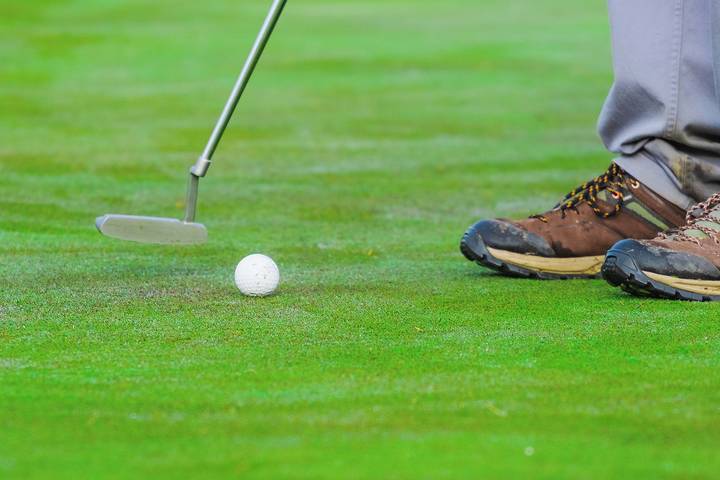When a golfer says they’re heading out to practice, nearly everybody assumes they are visiting the driving range. There’s more to golf practice than just the swings, which means working on your entire performance and experience in the sport.
Golf is more than just a sport. It teaches the players plenty of life skills, from having focus, patience, self-confidence, dedication, and more. If you’re a beginner or an aspiring golfer, you’re just some steps away from understanding how to practice effectively. While it’s okay to believe in yourself, you can always seek a golf professional’s guidance with the sport for companionship and greatness.
Here are how to practice golf and achieve the most out of your precious time.
Types of Golf Practice

There are three main types of golf practice: block, random, and variable. Block practice is quite common to most golfers at different levels as it involves hitting one ball after another repeatedly without a particular purpose or direction. The practice is ideal for golfers striving to achieve a specific swing position or any other technique.
After grasping the block practice, amateur golfers usually proceed to random. The practice serves as a bridge from block to variable practice. Golfers in this stage practice at an actual field, hitting balls repeatedly with different golf drivers.
This time, the balls are hit in a particular direction (hole), enhancing the player’s concentration level. Random practice usually takes a longer period compared to block.
Lastly, the variable practice focuses on a particular golf technique or skill, aiming at improving the golfer’s performance in the long run. For instance, if an amateur golfer wishes to grasp the swing technique, their trainer will focus on it until the trainee is ready to move to the next step. Time consumed in the variable phase can be relatively short with regular practices and a positive mind.
Golf Practice Checklist

You should focus on some areas to achieve the best out of the time used on the field when practising golf, while others are minor (but important). Below is a golf practice checklist to help you generate a reliable timetable. Remember, mistakes are part of learning, thus, should be embraced and positively worked on.
Short Putting
Short putting is the most straightforward yet crucial skill every golfer should possess. It usually involves hitting a ball approximately 3ft from the hole. Golfers should remain moderately confident with short putting to avoid striking longer or shorter shots.
Short Iron
Another critical golf practice area is the short iron which requires golfers to apply 8 and 9 irons and a pitching wedge concurrently. For the best results possible, a golfer should pick targets from varying distances to generate a different pace and length with every shot.
Touching Shots
You cannot practice golf without touching touch shots which refers to achieving the right amount of force when hitting balls. Although it can take some time before developing a particular range of touch shots, the determination significantly contributes to your overall golf experience in the long run.
Driving games use golf drivers appropriately for the best shots possible. While practising golf, ensure to achieve the best driving skills rather than typically hitting the balls.
Learning the Fundamentals
One last area all golfers should concentrate on when practising golf is the fundamentals, which include alignment, posture, stance, and grip. The good thing about this area is that you don’t have to visit the driving range to practice. A full-length window or mirror and a professional trainer work wonders in practising various golf fundamentals.
Tips for Golf Practice
Practising golf is one thing, while doing it perfectly is another topic. Thankfully, these golf practice tips will help you win the best out of your time while improving your experience with the sport.
1. Develop a Timetable

Besides saving you plenty of time and energy, a timetable helps you maintain consistency with your golf practice. Every golfer should develop a timetable for the training, especially those with limited time.
For instance, if you have an hour or two, you should go for mirror sessions while preserving the complex sessions for longer hours. It’s even better when you create the timetable with the help of a professional golfer for the best results possible.
2. Make Friends With Different Golf Drivers

Golf drivers are the sticks used to hit golf balls toward their targets. It’s nearly impossible to achieve the best skills and knowledge concerning golf without the proper golf drivers.
Best, in this case, isn’t a matter of your favourite colour but rather how perfectly the equipment aligns with your body’s energy and height. Another consideration includes the flexibility of the equipment in different positions and techniques.
3. Practice Different Shots

When you start practising golf, you will have chosen your favourite shot within the first two weeks of the sport. However, sticking to a particular shot while neglecting the others is not advised.
You should at least master different shots during your golf practice while giving yourself enough time for each. Simultaneously, you don’t have to grasp all the golf tricks in the world. Otherwise, you might be overwhelmed by the sport.
4. Document Your Performance

Alongside your practice plans, it would be wonderful to document your occasional performance in the field. You can document your performance after every practice session or every month if you’re relatively busy.
Documentation helps you evaluate if you’re still working within your initial practice plans and discover where you can change or do more. Again, be honest with yourself during the documentation process, especially if you’re practising alongside a trainer, as they will better understand your areas of strengths and weaknesses in the field.

